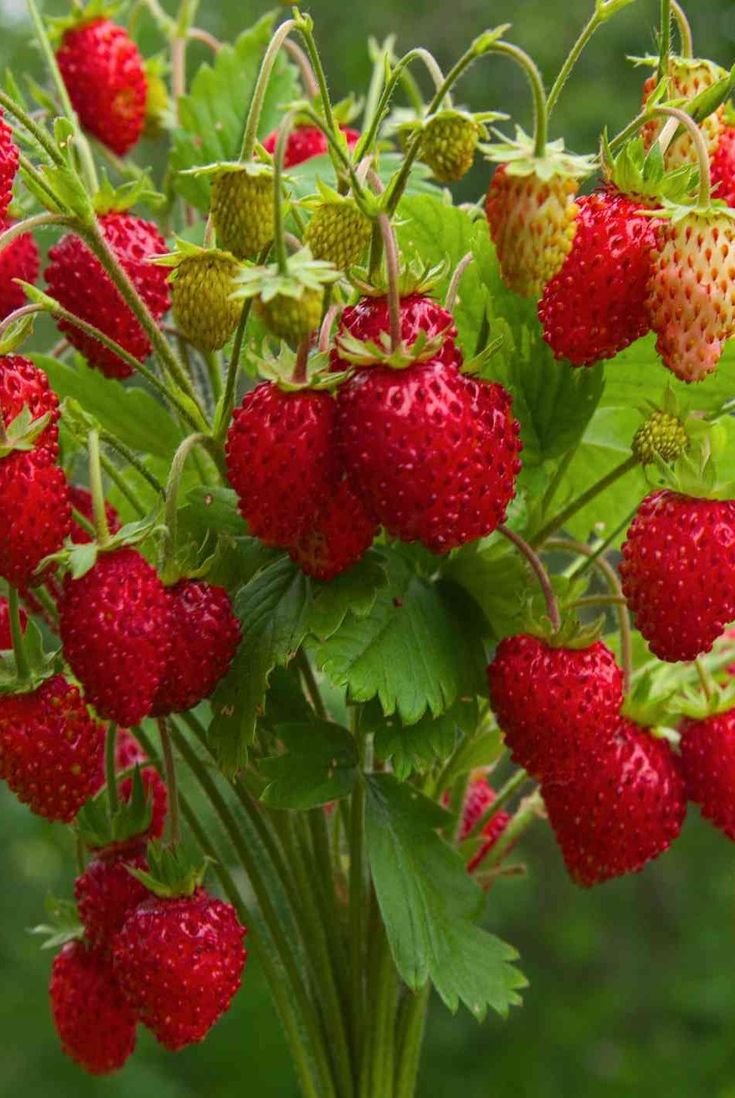Introduction to how to grow Strawberry in home garden during winters
When grown properly, strawberries provide a blast of luscious sweetness, making them one of the most satisfying fruits to produce at home. With proper care and methods, growing strawberries in the winter is completely feasible. Regardless of your level of gardening experience, this article will teach you all you need to know about how to grow strawberry in your home garden in the winter.
1. Benefits of Growing Strawberries at home:
Strawberries are rich in fiber, vitamins, and antioxidants along with being delicious. You may save money while getting fresh, chemical-free berries by cultivating them at home. Here are a few key advantages to grow strawberry in home garden:
• Fresh Taste: Strawberries cultivated at home have a far better quality than those from the shop.
• Pesticide-Free: No dangerous pesticides are used because you are in charge of the growing process.
• Therapeutic Gardening: Winter gardening has several benefits, including the potential for relaxation and healing.

2. Selecting the Best Strawberries to Grow in the Winter:
The first step in growing a great winter crop of strawberries is choosing the right type. Certain types of strawberries do better in the winter and are more tolerant of chilly temperatures. Here are several possibilities to grow strawberry in home garden.
• Day-Neutral Varieties: These are less impacted by shorter winter days and yield fruit regardless of the length of the day. Seascape and Tristar are two examples.
The alpine berries: Alpine strawberries are renowned for their resilience and tiny berries, which allow them to survive the harsh winter temperatures.
• Ever-bearing Varieties: Quinault and Ozark Beauty bear fruit all year long, even in the colder months.
Tip: To make sure you’re buying winter-friendly cultivars appropriate for your area, check with nearby nurseries or reliable internet seed sources
3. Preparing the Soil to Grow Strawberry in Home Garden:
Well-draining soil that is high in organic matter is ideal for strawberries. Here’s how to get your containers or garden bed ready:
• pH Balance: Soils with a pH of 5.5 to 6.5 are ideal for strawberries because they are somewhat acidic. A home testing kit can be used to determine the pH of your soil.
Modify the Soil: To improve the soil, add peat moss, old manure, or compost. This will improve drainage and give your strawberries vital nutrients.
• Raised Beds: If you’re gardening in a colder climate, think about using raised beds. These can help shield plants from frost since they warm up much faster than the ground.

4. Winter Strawberry Planting:
Winter planting can be slightly different from spring planting. Here are some key points to consider:
• Timing: In order to give roots time to establish before severe frosts, it is recommended to plant strawberries in late fall or early January if your winters are harsh.
The strawberry plants should be spaced 12 to 18 inches apart to provide for proper airflow and growth space.
Planting Depth: Make sure the crown, which is where the stem and roots connect, is level with the soil. Planting too shallow can expose the roots, while planting too deep can result in rot.
5. Protecting Strawberries from Winter Frost:
Preserving your strawberry plants from harsh winter conditions is crucial for successful cultivation. Here’s how to accomplish it:
• Mulching: To protect the roots from frost damage, cover your strawberry beds with mulch, pine needles, or straw. Try to apply a 3–4 inch coating, but don’t cover the entire crown.
• Row Covers: To protect plants from frost while preserving airflow, use cloth row covers or cloches.
• Container Gardening: During freezing temperatures, relocate potted strawberries to a protected area, like a greenhouse or covered patio.
6. Watering and Care Tips:
Proper watering is essential for winter strawberries, as excessive watering can lead to rot, and underwatering may stunt growth.
• Consistent Moisture: Water frequently, but take care not to soggy the soil. Strawberries do flourish in damp, but not wet, environments.
• Fertilizing: Fertilize sparingly in winter. Instead of producing fruit, overfertilization might result in excessive leaf growth. If required, apply a slow-release, balanced fertilizer.
Organic Solutions: Use organic pest control methods like neem oil spray or introduce natural predators, such as ladybugs.

7. Winter Strawberry Harvesting:
Growing strawberries in the winter requires a lot of patience. Once your strawberries are ripe, they’ll be deep red and easy to pluck from the vine. Here’s how you harvest them and take care of them afterward:
• Gently Twist and Pull: Gently twist the ripe strawberry from its stem to ensure not to harm the plant.
• Regular Harvesting: To encourage the plant to yield more fruit, harvest strawberries as soon as they are ripe.
• Storage: You may keep fresh strawberries in the fridge for up to a week. Think about preserving extra berries for jams or smoothies.
8. Companion Planting for Strawberries:
Companion planting can help deter pests, enhance growth, and improve soil health. Here are some great companions for strawberries during winter:
- Garlic and Onions: These plants repel harmful insects and can enhance strawberry flavors.
- Spinach and Lettuce: These leafy greens provide ground cover and help retain soil moisture.

9. Conclusion:
Growing strawberries during winter in your home garden is not only achievable but can be incredibly rewarding. With careful planning, consistent care, and attention to detail, you’ll enjoy fresh strawberries even in the colder months.
Ready to transform your home garden this winter? Start by choosing the perfect strawberry variety and preparing your soil. For more gardening tips, check out our other seasonal guides!
Have you successfully grown strawberries during winter? Share your tips and experiences in the comments below!

